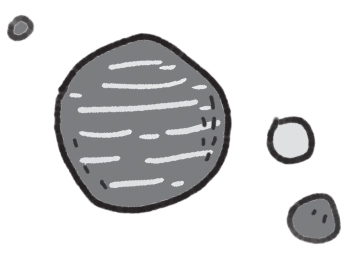Three Science Facts to Impress Your Friends and Teachers

1. The path an object takes in space as it travels around another object is called its orbit. The mass of the larger object keeps the smaller one from flying away. For example, the moon orbits Earth, while the planets in our solar system orbit the sun. Akbar’s Floating Rest Stop orbits the whole Milky Way galaxy! We have put all sorts of cool things into orbit around Earth, including satellites to track weather patterns and for communication, telescopes to take pictures of deep space, and one of humanity’s greatest achievements, the International Space Station, where astronauts and scientists can live for months at a time in order to conduct experiments in space.
2. The International Space Station (ISS for short) floats in orbit 220 miles from Earth. It may not be as big as Akbar’s Floating Rest Stop, but it’s as large as a professional soccer field and weighs almost 400 tons! Each time a part needs to be added, it has to be built on Earth and launched into space, and astronauts have to attach it. The ISS is a truly international venture, with scientists from the United States, Canada, Japan, the European Union, and Russia contributing to it and performing experiments that will help all of mankind.
3. Whenever Archie meets a new alien, he marvels at how different each species can be. This is also true on Earth, where there are so many different habitats (places where animals can live) that creatures have adapted the traits necessary to survive in that area. Scientists call this biodiversity. There is more biodiversity in the warmer parts of Earth than in the colder ones. So far scientists have found 1.7 million different species on Earth, and they estimate there may be as many as 50 million more! It’s important for humans to protect our planet’s biodiversity.